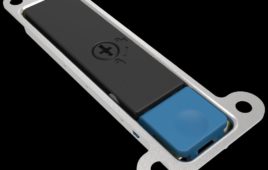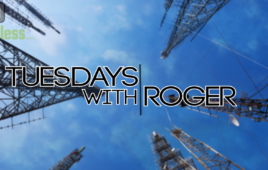Way back in 2000, I sat in the executive conference room of the FCC building in Washington, D.C. and listened to the senior officials call the spectrum that WiFi now uses “garbage bands.” Back then this mostly referred to the 2.4 GHz spectrum, but also included bits of 900 MHz and 5 GHz, which was rolled into a grouping then called the “ISM bands” (industrial, scientific, and medical). The initial idea was that since carriers weren’t interested in those bands, why not release them with an open use regime in the hopes that companies could find innovative and interesting uses and applications.
Boy, how times have changed. WiFi (the so-called garbage band) has become ubiquitous. Today, from baby monitors to garage door openers to Bluetooth devices and everything in-between, WiFi is being used in some capacity or another worldwide, even by people living in the most minimally developed countries. Even in my own home with multiple teens, flaky WiFi (or WiFi going down) meets their subjective definition of a crisis. In fact, even back in 2012 in a comprehensive EU-funded study found, “71 percent of all wireless data traffic that was delivered to smartphones and tablets in the EU was delivered via WiFi.” In other words, this lowly spectrum has even rescued the hides of many giant mobile carriers around the world, taking heat off their multi-billion dollar bands. So much for garbage spectrum!
Let’s be honest – WiFi still has its limitations. Designed as a “best effort” service, it cannot deliver quality of service (QoS) to the level most large-scale companies and average everyday consumers demand. It requires significant bolt-ons to give it security – a big concern for everyone from HIPAA-vulnerable healthcare entities to utilities and others maintaining critical infrastructure that have the strictest security needs. And finally, a victim of its own success, EVERYONE uses it, so the spectrum is often crowded, with countless devices competing and interfering with one another. But, up until now, spectrum-less companies have had nothing else to choose from and so have had to use WiFi.
That’s where the CBRS – or Citizen’s Broadband Radio Service – band comes in today. A new allocation of similar size to WiFi, this new band was created by the FCC to provide another vehicle to deliver high quality broadband internet, cellular offload and capacity densification, and similar connectivity services, like the Internet of Things. The rules are tough to explain in short form, but it uses the latest technology that permits all devices to be plugged into a Borg of sorts (Google is building the biggest one) that allows spectrum sharing and manages the environment in real time. The rules allow for any entity to purchase special low cost licenses that give them priority use, meaning they can build private networks and get the same level of protection as the giant mobile carriers.
It’s that last part that is really significant. For the first time in U.S. history– groups most in need of protected spectrum to do important and often critical services will be able to purchase their own protected spectrum for a fraction of what such spectrum might normally cost. The low cost is made because of how it is going to be divided and shared.
The licenses will be broken up by census tract, and there are around 74,000 of them in the United States. Then there are seven available “PALs” (priority access licenses) available per census tract. That’s a lot of licenses, and in the more rural areas where one census tract may cover an entire county, the license costs are expected to be minimal – maybe even a few thousand dollars. That means a local school system or power provider or broadband internet company or hospital can buy licenses that will then let them operate their own networks – indoor and outdoor – that will be at no risk of interference from others. Additionally, it means more secured access. The best part is that the type of LTE technologies being designed for this spectrum will allow for the type of QoS WiFi simply could not provide. Simply put, this spectrum offers the same capabilities of WiFi to the industry and companies and organizations, but with none of the problems that plague WiFi!
LTE Dominates – and That’s a Good Thing
There’s another dynamic at play that makes all this more powerful. This spectrum innovation comes along at time when LTE – the technology that makes your smart phone so powerful – has established itself as a global standard now so ubiquitous that it’s done for long range service what WiFi has done for hotspot-type coverage. Many of us no longer even have wired phones at home. In fact, according to this report by the National Center for Health Statistics, the second six months of 2016 was the first time that a majority of American homes had only wireless telephones. The amount and variety of LTE devices is mind numbing, just as it is for WiFi, except that LTE is used for high-quality ubiquitous connectivity. LTE will be the technology that the CBRS band will mostly use, and with that comes the safety of a standard with billions in industry R&D behind it each year and mass global adoption that drives cost reduction. And if all of that were not enough, there’s a special feature in using LTE: those building these special protected private networks will have the ability to plug into the mobile networks through agreements with the carriers.
The Timeline & Take Away
Industry has been working for two years to be ready since the FCC announced the CBRS band formally in April 2015. Millions upon millions have already been invested by equipment makers like Baicells, ‘borg’ builders like Google, and countless other things by countless other companies. If the rules are left alone, the CBRS band has the potential to contribute as much economic benefit as WiFi has done in the past 20 years, maybe even more.
However, mobile carriers are trying to have the rules changed in a way that will price out millions of others who want and need the ability to build private networks, and in practicality will make it their band only. If they succeed, all those companies – from your utilities, your local towns, your schools, and even your local broadband provider will be forced again under the thumb of the carriers. If that happens, they will be forced to pay large sums to use their services, or once again be relegated to the spectrum desert where their only other choice is a very crowded WiFi, where their critical networks will struggle against the interference crush of garage door openers, baby monitors, smart TVs, and the countless WiFi devices. And that’s no choice at all.
Patrick Leary is President of Baicells Technologies North America, Inc.
Filed Under: Telecommunications (spectrums)




